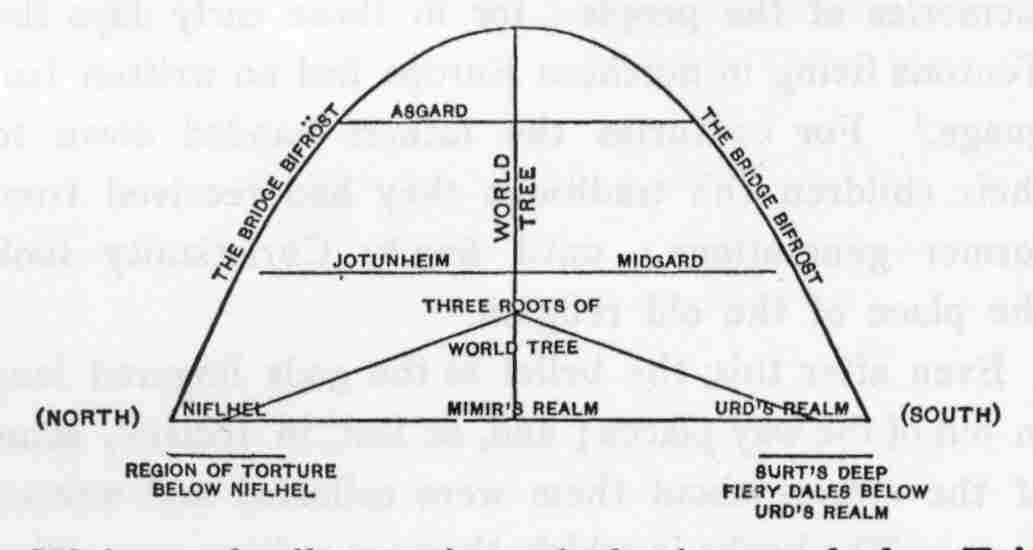"Hear the deep sound from the North
Baldur's fold in childhood's day;
The war-trumpet, Heimdall's horn,
At Bragi's silver-harps play!
Hear the lullaby that Norn's
Once sang for the nation's ear
And a Nordic youth's spirit
Still delights to hear!"
—Quoted in 'Our Fathers' Godsaga'

The Complete
Mythological Works
1886
-or-
Investigations into
Germanic Mythology
Vol. 1
A New Annotated Translation
by William P. Reaves
Fädernas gudasaga
-or-
Our Fathers’ Godsaga
The 3rd and Final Epic
1889
-or-
Investigations into Germanic Mythology Vol. 2
1889
Republished as
Teutonic Mythology:
Gods and Goddesses
of the Northland
1905-08
Earlier
Mythological Works
1881
Sagan om Svårdet
The Saga of the Sword
The 1st Epic
In Progress
by William P. Reaves
Foreword
Chapters 1-9
1884
-or-
by William P. Reaves
Writings on Runes
1873
-or-
'Towards the interpretation of the North's oldest runic inscriptions'
in Svenska Fornminnesföreningens
Tidskrift 2, pp. 234-246.
1874
-or-
'On the Tanum Runestone'
1891
-or-
the Rök Stone
|
|---|
| Opened in 1907, the assembly hall of the University of Goteborg is adorned with a monumental fresco by Nils Asplund (1874-1958). In it, the god Heimdall blesses man with the tools of culture and agriculture. Above his throne, engraved with Eddic verse, the ash Yggdrasill rises. The scene is derived from the mythological works of Swedish poet and polymath Viktor Rydberg (1828-1895). |
To view a short film of the interior of the hall containing this amazing fresco, click here.
Viktor's Site:
His Life, His Books, His Face
by Tore Lund

"I feel a certain tranquility when I now see that the results of these investigations worked on over many years were not for nothing, but are condensed into a book that on library shelves will be accessible to future researchers in the field. As far as my Scandinavian contemporaries are concerned, being that they are the 'professionals' in the field, I expect no recognition from them. If I get any recognition at all, it shall make me happier still. But of prime importance is that my work be published in one of these three languages: English, German, or French."

Mats Wendt's Eddan |
The Viktor Rydberg Society |
|
Over a
Century of Scholarship
about Viktor Rydberg and his work |
Dispelling Disinformation
|
derived from the Poetic Edda

Germanic mythology unique is twofold:
1. Using passages from the Eddic poems, Rydberg shows that the genuine heathen conception of the cosmos places Yggdrasill's three roots in the underworld, and its branches in the heavens. The underworld consists of a warm green land called Hel in the south, and a cold dismal realm called Niflhel in the north. The Bifröst bridge connects the underworld with Asgard, passing outside of the rim of the Midgard plane, as in the map above.
2. He demonstrates that the events spoken of in the Icelandic mythological poems are linked together in an epic chain of events arranged in chronological order from the creation of the world through to Ragnarok. The mythology is in effect, a history of the gods and their interactions with man. This ancient epic originated in Proto Indo-European times and afterwards developed independently in the Germanic region until the conversion to Christianity.
